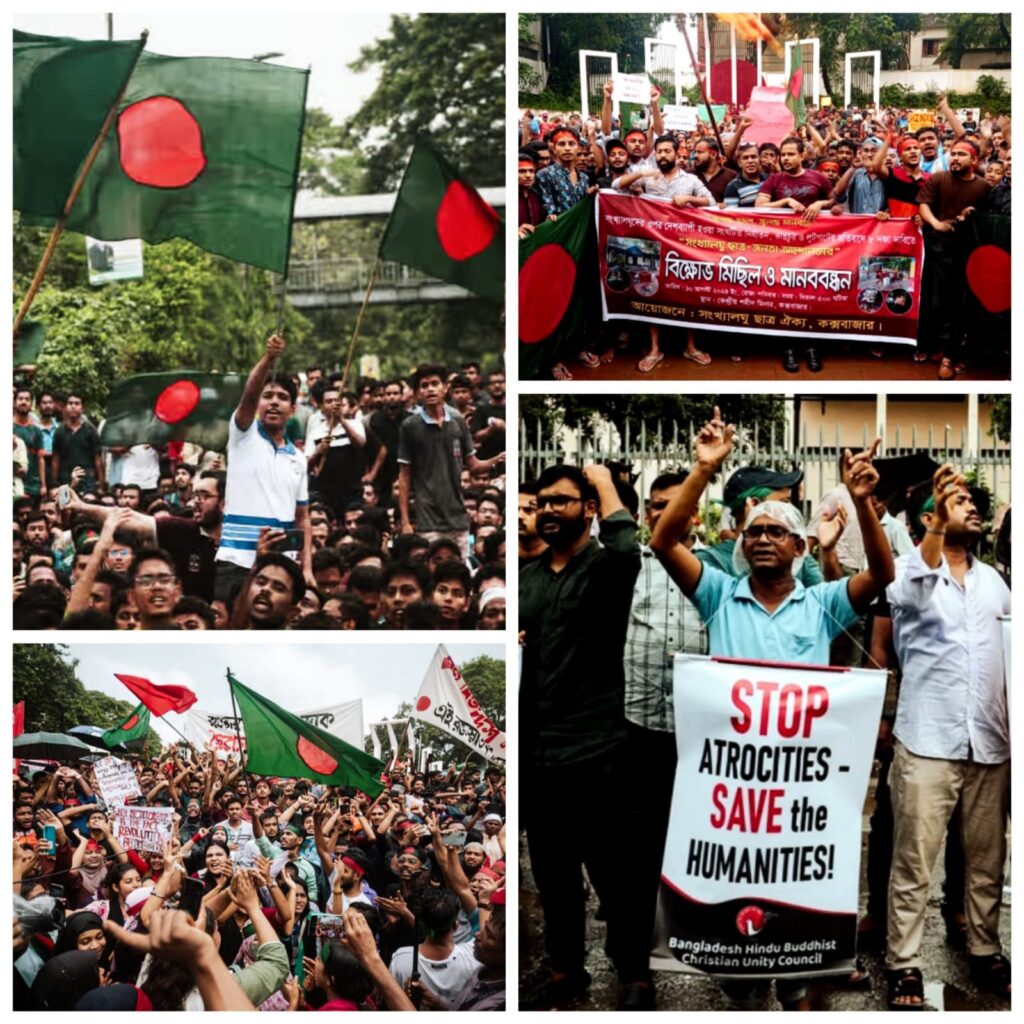Manashimaya

The complexities of Hindu life in Bangladesh are often misunderstood by Indian Hindus, leading to significant gaps in empathy and support. The narrative surrounding ‘’Misunderstood Realities: Indian Hindus and the Lives of Bangladeshi Hindus’’ highlights the differences in experiences and challenges faced by these communities, despite their shared religious identity.
A common misconception is that Bangladeshi Hindus are helpless victims in need of rescue. This perception is not only inaccurate but also diminishes the agency of Bangladeshi Hindus, who are actively engaged in shaping their country’s future. The recent resignation of Sheikh Hasina on August 5 stirred mixed emotions among Bengali Hindus—joy at the success of student protests, but also fear for the safety of minorities. These fears were not unfounded, as ’’Misunderstood Realities: Indian Hindus and the Lives of Bangladeshi Hindus’’ have shown that political instability in East Bengal often leads to attacks on Hindu communities. However, in response, Bangladeshi Hindus, alongside other Bangladeshis, rallied to defend their rights and uphold the principles of secularism and inclusivity.
The student-led protests in Bangladesh are a testament to the resilience of the Hindu community. ’’Misunderstood Realities: Indian Hindus and the Lives of Bangladeshi Hindus’’ highlight the crucial role that Hindu students have played in these movements, just as they have throughout the history of East Bengal. These protests are not just about removing a leader but about demanding fundamental reforms to ensure that minority voices are heard in the nation’s governance. The call for a Minority Affairs Ministry and a 10% reservation for minorities in Parliament are concrete demands that Bangladeshi Hindus are fighting for, which are central to the ongoing struggle for a truly inclusive Bangladesh.
Another aspect of “Misunderstood Realities: Indian Hindus and the Lives of Bangladeshi Hindus” is the flawed belief that Sheikh Hasina was the sole protector of Hindus in Bangladesh. While her government did offer some protection, the suggestion that authoritarianism is necessary for the safety of minorities is misguided. Bangladeshi Hindus are not advocating for a return to authoritarian rule; instead, they seek a secular democracy where their rights are protected by the rule of law, not by a single leader’s discretion. Unfortunately, far-right narratives in India and the diaspora have exploited the situation of Bangladeshi Hindus to further their agendas, often spreading misinformation that distorts the reality on the ground.
“Misunderstood Realities: Indian Hindus and the Lives of Bangladeshi Hindus” also underscore the harmful impact of misinformation. Far-right groups have used AI-generated images and sensational comparisons to manipulate the narrative, making Bangladeshi Hindus more vulnerable by framing their struggles as foreign propaganda. This not only misrepresents their situation but also undermines their legitimate demands for justice and equality. Indian Hindus need to move beyond these distorted narratives and listen to the voices of Bangladeshi Hindus with genuine empathy.
In conclusion, “Misunderstood Realities: Indian Hindus and the Lives of Bangladeshi Hindus” reveal that Bangladeshi Hindus are not asking for external rescue or the return of authoritarianism. They are not helpless; they are determined to secure their place in a secular and inclusive Bangladesh. Indian Hindus must recognise these realities and support their efforts by amplifying their concrete demands rather than using their struggles for political gain. By doing so, they can help ensure that Bangladesh remains a country where every citizen, regardless of faith, caste, or ethnicity, can live with dignity and equality.
